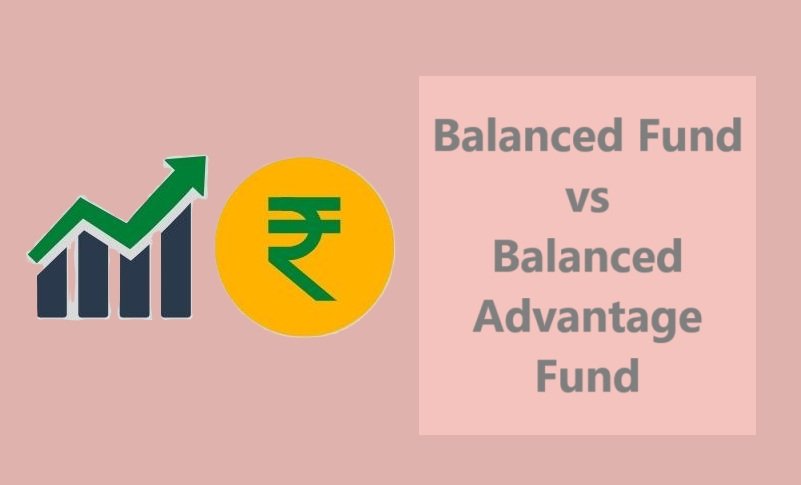
Mutual fund investments offer a plethora of options tailored to meet different financial goals and risk appetites. Among these, balanced funds and balanced advantage funds are popular categories that aim to strike a balance between equity and debt investments. While their names may sound similar, they cater to distinct investor needs and have differing strategies. Let’s delve into the key differences, features, and considerations to help you choose the right one.
What is a Balanced Fund?
Balanced funds, also known as hybrid funds, are mutual funds that allocate a fixed proportion of their assets to equity and debt. Typically, these funds maintain a pre-defined allocation, such as 60% in equities and 40% in debt instruments, to balance growth potential and stability.
Features of Balanced Funds:
- Fixed Allocation: The equity-to-debt ratio remains relatively constant, adhering to the fund’s investment objective.
- Moderate Risk: By investing in both equity and debt, balanced funds mitigate the risk associated with pure equity funds while offering better returns than pure debt funds.
- Diversification: Exposure to both asset classes provides diversification, reducing the impact of market volatility.
- Taxation: If the equity allocation is 65% or more, the fund is taxed as an equity-oriented fund. Otherwise, it’s taxed as a debt-oriented fund.
Benefits of Balanced Funds:
- Stability: The debt component cushions against market downturns, offering a degree of stability.
- Simplified Investment: These funds provide a one-stop solution for diversification across asset classes.
- Moderate Returns: Balanced funds aim to deliver steady returns over time, suitable for moderate-risk investors.
Drawbacks of Balanced Funds:
- Limited Flexibility: The fixed allocation doesn’t adapt to changing market conditions.
- Moderate Growth: Potential for high returns is capped due to a limited equity exposure.
What is a Balanced Advantage Fund?
Balanced advantage funds (BAFs), also known as dynamic asset allocation funds, are hybrid mutual funds with a flexible allocation strategy. They dynamically adjust their equity and debt exposure based on market conditions, valuations, and risk factors.
Features of Balanced Advantage Funds:
- Dynamic Allocation: The equity and debt mix is adjusted to optimize returns and minimize risks.
- Market Sensitivity: Fund managers use proprietary models to decide the asset allocation, making these funds responsive to market changes.
- Tax Efficiency: These funds are often structured to maintain at least 65% exposure to equity, enabling equity-like taxation.
- Risk Management: By reducing equity exposure during market highs and increasing it during market lows, these funds aim to manage volatility effectively.
Benefits of Balanced Advantage Funds:
- Flexibility: The dynamic allocation strategy helps capitalize on market opportunities while mitigating risks.
- Downside Protection: Lower equity exposure during volatile markets minimizes losses.
- Higher Return Potential: Strategic allocation increases the chances of earning superior risk-adjusted returns.
Drawbacks of Balanced Advantage Funds:
- Complexity: The fund’s strategy may not be transparent or easy to understand for new investors.
- Performance Dependency: Returns heavily depend on the fund manager’s ability to execute the dynamic strategy effectively.
Key Differences Between Balanced Funds and Balanced Advantage Funds
| Feature | Balanced Funds | Balanced Advantage Funds |
|---|---|---|
| Allocation | Fixed equity-to-debt ratio | Dynamic equity-to-debt ratio |
| Flexibility | Limited | High |
| Risk Level | Moderate | Moderate to low |
| Taxation | Equity or debt taxation based on allocation | Often equity taxation (65% equity) |
| Management Style | Relatively straightforward | Advanced, model-driven |
| Objective | Stable returns | Optimized risk-adjusted returns |
Which One Should You Choose?
Choosing between balanced funds and balanced advantage funds depends on your financial goals, risk tolerance, and market outlook. Below are some considerations:
- Risk Appetite:
- If you prefer stability and are comfortable with a fixed asset allocation, balanced funds might be a better fit.
- If you’re looking for dynamic risk management and potentially higher returns, consider balanced advantage funds.
- Market Knowledge:
- Balanced funds are ideal for investors seeking simplicity and consistent returns.
- Balanced advantage funds suit investors who trust fund managers to navigate market complexities effectively.
- Investment Horizon:
- Both fund types are suitable for medium to long-term goals, such as retirement planning or wealth accumulation.
- Tax Efficiency:
- If equity taxation benefits are a priority, ensure the chosen fund’s equity exposure aligns with your expectations.
- Market Conditions:
- In a stable or bullish market, balanced funds may perform well.
- During volatile or uncertain markets, balanced advantage funds’ dynamic approach offers an edge.
Examples of Suitability
- Balanced Funds: A conservative investor planning for a child’s education in 8-10 years might prefer balanced funds for steady growth and stability.
- Balanced Advantage Funds: An investor seeking long-term wealth creation with some degree of downside protection might opt for balanced advantage funds.
Conclusion
Balanced funds and balanced advantage funds both offer unique advantages tailored to different investor needs. While balanced funds provide simplicity and stability through a fixed allocation, balanced advantage funds bring flexibility and adaptability to changing market conditions. Understanding their features, benefits, and risks is essential to align your investment choice with your financial goals and risk tolerance.
As always, it’s advisable to consult a financial advisor to evaluate your specific needs and craft an investment strategy that suits your overall financial plan. Whether you choose balanced funds or balanced advantage funds, maintaining a disciplined investment approach is key to achieving your long-term financial objectives.
Disclaimer: This article is for informational purposes only and does not constitute financial advice. Investing involves risk. Consult with a qualified professional before making any investment decisions.
Read This: Popular Terminologies Around IPO






